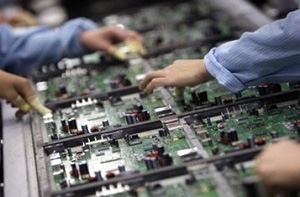Japan to fortify supporting industries
 illustration photo |
The Japan International Cooperation Agency (JICA) and the State Bank last week introduced a credit programme for Vietnamese small- and medium sized enterprises (SMEs) operating in supporting industries.
Under the plan, an SME, which in Vietnam is defined to have total maximum assets of VND20 billion ($961,358) and employees of no more than 300, would be granted consessional loans worth $1.2 million for each supporting industry project, within ten years and with a grace period of maximum two years. Credit will be provided by 23 local banks.
The programme would be expanded to turn local SMEs into big ones and might become large and powerful international suppliers in the future, said Kyoshiro Ichikawa, a Vietnam-Japan Joint Initiative Working Team 4-1 leader.
“Finance remains the biggest challenge for local supporting industry firms, and Vietnam will not be able to become an industrialised nation by 2020 without strong supporting industries,” he said.
According to the JICA, Vietnam needs to strengthen its weak supporting industries to attract high technologies and more Japanese industrial developers who tend to expand investment outside - rather than inside - Japan, due to this nation’s aging population and growing production costs.
For example, South Korea’s Samsung Vietnam recently started construction of a $2 billion smart-phone making complex in northern Thai Nguyen province, in addition to its existing $1.5 billion factory in northern Bac Ninh province.
“But Samsung has to import components from its production bases outside Vietnam to assemble them into completed-built products. This will not create added value to Samsung’s products in Vietnam and cannot transfer any high technology to Vietnam. The problem can be solved if Vietnam has good supporting industries,” Ichikawa said.
According to the JICA, the industrial localisation rate of Vietnam remained low at 22.4 per cent. Meanwhile, the rate is far higher in several other nations, with 22.7 per cent in the Philippines, 36.1 per cent in Singapore, Indonesia (42.9 per cent), India (45.2 per cent), Malaysia (45.9 per cent), Taiwan (49.2 per cent), South Korea (55 per cent), Thailand (56.1 per cent) and China (58.3 per cent).
In Vietnam, the localisation rate was 40-75 per cent for motorbikes, 30-40 per cent for office machines and 5-10 per cent for automobiles.
“It has taken time and cost for Japanese assemblers to seek local suppliers. A Japanese assembler has had to approach hundreds of local companies to find a good supplier,” Ichikawa said.
According to Ichikawa, some big Japanese firms currently want to implement high-technology supporting industry projects in Vietnam. But Vietnam still does not have any specific standards for developing high-technology products and put its supporting industries strategy into practice, which cannot make investors’ investment possible soon in Vietnam.
Also, the Vietnamese government has enacted many legal documents and regulations on supporting industries, “but it needs give financial supports to enterprises operating in such industries. Without capital, enterprises cannot develop,” Ichikawa said. “The government also needs to build data bases for supporting industries, so that foreign industrial developers can make their investment plans in Vietnam.”
What the stars mean:
★ Poor ★ ★ Promising ★★★ Good ★★★★ Very good ★★★★★ Exceptional
 Tag:
Tag:
Related Contents
Latest News
More News
- Global partnerships key to Vietnam’s IFC development (December 26, 2025 | 16:18)
- Vingroup pulls out of bid to invest in North-South high-speed railway (December 26, 2025 | 11:42)
- Strengthening supply chains through trade promotions and customs reform (December 24, 2025 | 14:00)
- PM orders investment model for North–South high-speed rail (December 22, 2025 | 17:43)
- LS Eco Energy to invest in Vietnam rare earth sector (December 22, 2025 | 17:31)
- Government moves to establish International Financial Centre (December 21, 2025 | 21:00)
- Vietnam's IFC to target global investment flows (December 21, 2025 | 18:00)
- Two national hospitals expand capacity with new facilities (December 20, 2025 | 09:00)
- Ha Tinh breaks ground on major Vingroup industrial and energy projects (December 19, 2025 | 18:24)
- EVN launches major power infrastructure projects nationwide (December 19, 2025 | 18:17)























 Mobile Version
Mobile Version